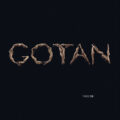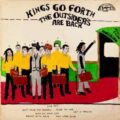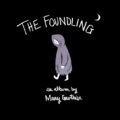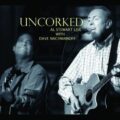Jimmy Webb – Finally in Front of His Own Hit Parade by Stephen Holden (New York Times)
Posted on Sunday, July, 25, 2010 | Comments Off on Jimmy Webb – Finally in Front of His Own Hit Parade by Stephen Holden (New York Times)
IS it possible for a musician to emerge unscathed from the kind of early success enjoyed by the singer-songwriter Jimmy Webb? In the late 1960s, when he was barely 21, Mr. Webb was showered with Grammys for writing the Glen Campbell hits “By the Time I Get to Phoenix,” “Wichita Lineman,” “Galveston” and the Fifth Dimension’s “Up, Up and Away.” Then there was “MacArthur Park,” the grandiose quasi-symphonic “cake out in the rain” popularized by the Irish actor Richard Harris and in 1978 remade into a disco fantasia by Donna Summer. These songs established Mr. Webb — the son of a strict Baptist minister from Elk City, Okla., who moved his family to Southern California in the mid-’60s — as a pop music wunderkind with a Midas touch. But because his intensely romantic ballads straddled two worlds — traditional pop and country-flavored Southern California rock — Mr. Webb found himself on the far side of a generation gap. At the same time, he admits sheepishly today, he avidly subscribed to his generation’s slogan of not trusting anyone over 30. To his profound frustration, audiences over 30 didn’t buy him as a singer-songwriter when he began releasing albums in the early ’70s. Not that that kept him from the customary excesses of the time. “I lost it pretty badly,” he said of those days, “but unlike some others, I never wanted to die — not really.” Sitting in his publicist’s Lower Manhattan office on a steamy afternoon recently, Mr. Webb, tall and rangy, now 63, still has a wild man’s gleam in his eye. He is a marvelous storyteller with the expansive style of a rural yarn spinner, who becomes more excited the more wound up he becomes. If he is an endless storehouse of real-life rock ’n’ roll adventure stories, set mostly in Hollywood and London in the late ’60s and...
Gotan Project, Tango 3.0
Posted on Thursday, July, 1, 2010 | Comments Off on Gotan Project, Tango 3.0
As we step into 2010, music blares from the radio that quite comfortably merges rhythms from Serbia and Colombia, the voice of Oumou Sangaré and the melodic thump of Maori reggae. But when it comes the new “world music” ie. the merging of DJ culture with music from the worldwide underground – Gotan Project were the first to successfully bring the traditional and the folkloric into the electronic space. The million selling ‘La revancha del tango’ was followed by their second album the more jazz influenced ‘Lunático’ and Gotan Project toured the world with their new “world music”. I’d always been a fan of Astor Piazzolla who I’d seen performing at Montreux Jazz Festival aged 14. Ever since then I’d been seduced by the bandoneón as an instrument and was curious about hearing it outside of its traditional bubble. Gotan Project not only established a unique and highly influential sound but they’ve also preserved the class and elegance of this instrument. Here we are then, 10 years on with their remarkable third album ‘Tango 3.0’ which, without breaking such radical new ground as their debut, has refined all the founding elements of what makes the Gotan Project the wondrous thing that it is. Understated beats, reflective moods and atmospheres rooted in the dusty backstreets of Buenos Aires and Paris, laced with marvellous voices such as Cristina Vilallonga on ‘Peligro’ or Melingo blessing ‘Tu Misterio’. Although in Tango 3.0 Gotan Project remain faithful to their founding principles, they have also managed to push the musical barriers further by inviting an exciting host of guests and collaborators. Dr. John lends the smooth sound of the Hammond B3 to ‘Tango Square’. The work of Argentinian author Julio Cortázar is honoured through a reading from his groundbreaking novel Rayuela (Hopscotch) on the track of the same name. Even Víctor Hugo Morales, the legendary...
Kings Go Forth, The Outsiders Are Back
Posted on Thursday, July, 1, 2010 | Comments Off on Kings Go Forth, The Outsiders Are Back
The soul revival isn’t reviving any careers– it’s creating them. Older musicians like Sharon Jones, Lee Fields, and Charles Walker were never exactly household names, not even among record collectors, but now they find themselves with more professional potential in front of them than behind them. Since there is little context for these artists, they aren’t obliged to sleepwalk through old hits or old routines. Despite the reliance on old sounds, it’s all new. It’s an exciting moment for soul music, as albums by Jones, Fields, Walker’s the Dynamites, and now Kings Go Forth indicate these older musicians are taking nothing for granted, which lends their music an urgency that transcends mere revivalism. The musician known as Black Wolf wasn’t well known outside the world of cratediggers and soul enthusiasts when he struck up a conversation with Andy Noble, owner of Lotus Records in Milwaukee. During the 1970s, Black Wolf had been a member of the Essentials, a regional soul act whose claim to fame was recording in Curtis Mayfield’s studio. He and Noble started a new band and named it Kings Go Forth, after a 1958 Frank Sinatra-Tony Curtis movie. Since then, the 10-member, intergenerational outfit has released a series of 7″ singles and gradually but determinedly built a reputation as a dynamic live act, settling easily into complex grooves that highlight Black Wolf’s high-flying vocals. Along the way, the band has picked up some notable admirers: Famed disco DJ Tom Moulton, who really did invent the remix, mixed their “Don’t Take My Shadow”, and D.C. folk artist Mingering Mike, famous for painting covers for imaginary albums, created the artwork for the first Kings Go Forth full-length, The Outsiders Are Back. This record gathers singles dating back to 2007 yet proves cohesive and consistent. Rather than a collection of mismatched parts, Outsiders sounds like a unified work, even if it...
Mary Gauthier, The Foundling
Posted on Thursday, July, 1, 2010 | Comments Off on Mary Gauthier, The Foundling
“There’s freedom in knowing that you don’t have to know it all,” she says, “which is why to me, a song should end with a question, not an answer.” It might seem that after six groundbreaking albums of original songs, more than a dozen years of recording and touring around the world, a harvest of music industry awards, and covers of her songs by a roster of great artists – that Mary Gauthier (say it: go-shay) should have a handle on some of the big answers. Yet with each new album, with each new cycle of songs that illuminate her soul, with each old and new set of characters and life changes she introduces, Mary is always ending up with more questions. Where do her people come from and where do they go? How can they find shelter from the storm? What is the truth? It is said that the master songwriters – the “truth tellers,” as Mary refers to the likes of Bob Dylan and Neil Young, Leonard Cohen and Patti Smith – always put a piece of themselves into every song and first shined light on the truth and lies of her world before she began to put pen to paper herself. It’s up to the listener to imagine what is real and what is a dream. This sense of autobiography has always loomed large in the work of Mary Gauthier. On her newest album, The Foundling, her first concept album, Mary opens the door on the defining circumstance of her life, the emotional journey and aftermath of finding the mother who surrendered her in New Orleans after her birth in March 1962 (the month Bob Dylan released his first album, to put a perspective on it). On The Foundling, Mary explains via her website (www.marygauthier.com), “the songs tell the story of a kid abandoned at birth who spent...
John Grant, The Queen of Denmark
Posted on Thursday, July, 1, 2010 | Comments Off on John Grant, The Queen of Denmark
One time vocalist with criminally underrated The Czars John Grant had all but given up on the notion of being a musician before he was convinced by Midlake to get back into the studio. Not content with producing one of the albums of this year themselves (The Courage of Others), Midlake offered their services to Grant as his band. The long shot of which is that this collaboration has thrown up yet another candidate for one of the best long players you’ll hear in 2010. Not that there’s anything particularly current about the sound of Queen of Denmark – far from it. This is an album that emulates the smooth sounds of the West Coast circa the early 70′s, and with Midlake being so adept at plundering musical history there’s no better band for such a purpose. Grant’s themes of disappointment, heartbreak, relationships, religious bigotry, and, er…Sigourney Weaver are all subjects that transcend time however. Kicking off with the gentle folk of ‘TC and Honeybear’ Grant deals with heartbreak straight away. Essentially a tale of insecurity, love and loss, it’s a wonderfully warm ballad of epic proportions that throws everything into the mix and never once sounds overbearing. Flutes flitting around like butterflies? Present and correct. Otherworldly mourning backing vocals from something that sounds like an angelic choir? They’re over by the fountain. A massive baritone voice that bursts with emotion over a perfectly executed climax? It’s all right there with Grant’s voice dripping an irresistible warm timbre all over this tale of loss. A perfect opener then, and from here on, Grant and Midlake don’t let up. ‘I Wanna Go To Marz’ is a quirky folk number which is essentially Willy Wonka’s product list coupled with some carefully placed sci-fi imagery. For some reason the mix of the authenticity of folk and the otherworldly imagery inspire a desperate...
Al Stewart, Uncorked (Live With Dave Nachmanoff)
Posted on Thursday, July, 1, 2010 | Comments Off on Al Stewart, Uncorked (Live With Dave Nachmanoff)
Al Stewart’s first all-acoustic live recording since 1992’s Rhymes In Rooms is a little like reconnecting with an old friend. Although not entirely unexpected, it’s still a welcome reminder of just how fine a talent the one-time “Year Of The Cat” hit-maker really is. Especially when left alone in a room to do his thing unadorned by the strings and over-production of some of those records made back when Stewart filled arenas, rather than the smaller, folkier venues where he was recorded here. On Uncorked, Stewart and his musical counterpart Dave Nachmanoff are simply two guys with their acoustic guitars — but together they create a surprisingly big noise. The smaller arrangements sound every bit as rich and full here, in a small setting, as on their studio counterparts, thanks to both a marvelously clear and crisp recording, and even more to just how well the two jell together as guitarists. And that is really the most delightful surprise here. Although Stewart is known primarily for his songwriting talents, this is as much of a showcase for the guitar as it is for the rich wordplay of his songs. The main disappointment is that once Stewart and Nachmanoff really get going, it’s not often clear just who is playing which part because they blend so well together. “Last Days of The Century,” for example, is at first propelled by what I presume to be Nachmanoff playing the bass part, with Stewart (again presumably) playing lead. Before long though, the two of them are ferociously trading solos in a blinding blur with all the deftness of Beck and Page in the Yardbirds, causing the audience to break into spontaneous applause at various points. On “News from Spain,” Nachmanoff plays Rick Wakeman’s piano solo from the studio version — an “unenviable task” Stewart jokes — on guitar, and totally nails it. But lest...








 The VOCAL SOUND OF JAZZ began airing on 89.5 FM (now WHRV-FM) on January 4th 1980. Originally a 30 minute program that aired on Friday evenings, the program expanded to it current 60 minute format and moved to Saturday evenings during the 90s. It was also aired over WUOM in Ann Arbor, Michigan for a five-year period in the late 1980s.
Produced and hosted by Jack Frieden since its premiere broadcast, the program has always attempted to spotlight both jazz vocal music’s post 1950s history, as well as the new singers and songs that will continue to play an increasingly prominent role in the music’s future. With the internet’s ability to attract and entertain jazz vocal fans globally, Jack looks forward to broadening the mission and reach of the “Vocal Sound of Jazz” in coming years.
Email Jack Frieden
Vocal Sound of Jazz LLC
1056 Downshire Chase
Virginia Beach, Va. 23452
Ph: 757 438 6785
The VOCAL SOUND OF JAZZ began airing on 89.5 FM (now WHRV-FM) on January 4th 1980. Originally a 30 minute program that aired on Friday evenings, the program expanded to it current 60 minute format and moved to Saturday evenings during the 90s. It was also aired over WUOM in Ann Arbor, Michigan for a five-year period in the late 1980s.
Produced and hosted by Jack Frieden since its premiere broadcast, the program has always attempted to spotlight both jazz vocal music’s post 1950s history, as well as the new singers and songs that will continue to play an increasingly prominent role in the music’s future. With the internet’s ability to attract and entertain jazz vocal fans globally, Jack looks forward to broadening the mission and reach of the “Vocal Sound of Jazz” in coming years.
Email Jack Frieden
Vocal Sound of Jazz LLC
1056 Downshire Chase
Virginia Beach, Va. 23452
Ph: 757 438 6785